Barbell Bench Press Best Guide: Benefits, Muscles Worked and Technique Tips
This extensive guide will teach you everything you need to know about the Barbell Bench Press.
What is the Barbell Bench Press?
The barbell bench press is a compound exercise that targets your chest, shoulders, and triceps.
It is performed by lying on your back on a bench and pushing a barbell upwards from your chest. The barbell bench press is one of the most ubiquitous and popular exercises in gyms all around the world.
- What is the Barbell Bench Press?
- What Muscles Does the Barbell Bench Press Work?
- What are the Benefits of the Barbell Bench Press?
- Barbell Bench Press Technique
- Barbell Bench Press Common Mistakes
- Barbell Bench Press Variations
- Barbell Bench Press Alternatives
- Barbell Bench Press Sets and Reps
- How Wide Apart Should My Hands Be for the Barbell Bench Press?
- What is the Best Bench Press Grip to Use?
- How to Set Up Your Feet for The Barbell Bench Press
- How to Lock Out the Barbell Bench Press
- How to Rack the Barbell Bench Press
- How Much Should I Arch my Back During the Barbell Bench Press?
- How to Unrack the Barbell Bench Press without a Spotter
- How to Bench Press Without a Spotter
- How to Bench Press Alone in A Power Rack
- How to Breathe During the Barbell Bench Press
- Best Safety Tips for the Barbell Bench Press
- What to Do if You Get Stuck During the Barbell Bench Press
- Why you Should Not Use a Thumbless Grip for the Barbell Bench Press
- Why Do My Wrists Hurt During the Barbell Bench Press?
- How Do you Make the Barbell Bench Press Harder?
- How Do you Make the Barbell Bench Press Easier?
- How Can I Increase the Weight of My Barbell Bench Press?
- Who Should Do the Barbell Bench Press?
- Is the Barbell Bench Press Suitable for Beginners?
- Can you Build Muscle with the Barbell Bench Press?
- Can you Build Strength with the Barbell Bench Press?
- Learn More
What Muscles Does the Barbell Bench Press Work?
The bench press is an upper body compound exercise that targets your chest and triceps.
The key muscle groups worked by the bench press are:
- Upper chest
- Lower chest
- Triceps
- Shoulders
Additionally, the core is used throughout the movement to stabilize your torso, even if you’re using a spotter.
What are the Benefits of the Barbell Bench Press?
The barbell bench press is a compound exercise that stimulates the muscles of your chest, shoulders, and triceps. As a result, the barbell bench press can help you build strength in these areas.
The barbell bench press also allows you to load up on weight, which can help increase your strength gains over time.
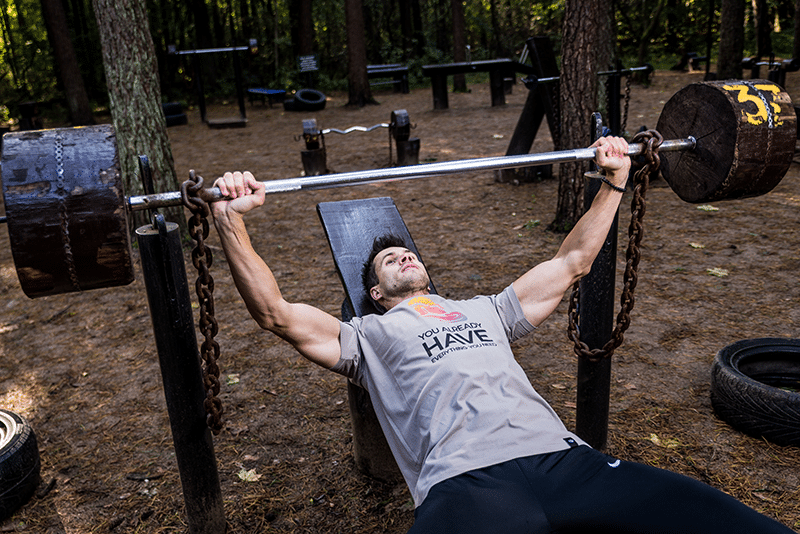
The barbell bench press is also a compound exercise that helps activate multiple muscle groups at once. You’ll engage various muscles in your shoulders and back during the movement as well as your glutes to keep your body stable.
Barbell Bench Press Technique
To execute the barbell bench press, you’ll need to grab a bench and set up your position.
Below is the basic overall technique. We will go into much greater detail for each of the different aspects of the lift.
- Place your feet flat on the floor with your lower back arched.
- Lower your head, shoulders and glutes onto a flat bench.
- Keep your shoulder blades retracted and chest up, squeezing the shoulder blades together.
- Grip the bar slightly wider than shoulder-width apart. This will help externally rotate your shoulders, which is important for all pressing exercises.
- Inhale and tense your core, grip and glutes.
- Unrack the barbell and stabilise the weight.
- Slowly lower the bar down to the chest. Make sure that metal touches skin (or t shirt).
- Pause then explode the barbell back up to the starting position and exhale.
- Repeat for the desired number of repetitions.
Barbell Bench Press Common Mistakes
Here’s a quick rundown of some common mistakes that can lead to up-and-down misery on the bench:
Breathing Incorrectly
This is a common problem among lifters who are new to the gym and aren’t disciplined enough to be consistent with their breathing. Researchers from Ohio State University found that when you breathe in, your pushing muscles stay contracted for 1.5 seconds after you inhale and then relax.
So, if you breathe in too early on this lift, your joints will have little time to recover before you return them to their starting position for the next rep.
Not Warming Up
This is an intensive lift. A proper warm up is absolutely essential.
Not Having a Spotter
Sometimes this is unavoidable, however it is always better to lift with a spotter if you can.
Letting your Elbows Point too Far Out
Don’t let your elbows flare out too much at any point during the range of motion.
Pushing Too Fast and Letting Momentum Do All the Work
This lift must be slow and controlled at all times.
Barbell Bench Press Variations
- Dumbbell Bench Press
- Incline Bench Press
- Decline Bench Press
- Close Grip Bench Press
- Reverse Grip Bench Press
- Bench Press with Chains
- Bench Press with Bands
- Spoto Press
- Board Press
Barbell Bench Press Alternatives
Now that you’ve learned the basic form, let’s look at some alternatives.
- Dumbbell Bench Press
- Machine Bench Press
- Incline Bench Press
- Decline Bench Press
- Landmine Bench Press
- Ring Bench Press
- Cable Crossover
- Kettlebell Push-Up
- Sandbag Chest to Bar Squat Clean Thruster (Okay, this one is not a bench press, but it’s another advanced exercise and a good way to confuse an opponent)
Barbell Bench Press Sets and Reps
The barbell bench press sets and reps will be as follows:
- 4-6 sets of 6-12 reps for hypertrophy or growth
- 3-4 sets of 3-4 reps for powerlifting building
- 1-3 sets to failure for supercharging the muscle building process
To gain strength, you will want to do the following:
- 3-6 sets of 4-8 reps with moderate loads. Note this has a big range. The question is whether you’re shooting more for strength with lower reps and heavier weights (e.g. 5×5), or want to work on strength endurance with higher load/lower reps (e.g. 8×3).
How Wide Apart Should My Hands Be for the Barbell Bench Press?
The most important thing to keep in mind is that your grip width is a personal preference. It’s the thing that feels comfortable and allows you to work through a full range of motion.
That said, there are some general guidelines to follow: Your hands should be shoulder-width apart on the bar, with your thumbs roughly one thumb’s width outside of your shoulders. This allows for two things:
- Your elbows will flare out at 45 degrees or so, rather than pointing straight toward your feet (this can cause injury).
- You won’t have to bounce the weight off of your chest like a basketball when it gets too heavy—you’ll actually be able to lower and lift the weight under control.
What is the Best Bench Press Grip to Use?
This is perhaps the most common way of gripping the barbell during the bench press. The grip width is placed wide enough so that elbows are tucked in, but not so wide that they flare out to the side.
The closer this grip is held to a “natural” position (the way your arms would hang at your sides), the more shoulder-friendly it tends to be.
It allows you to keep your shoulder blades squeezed back throughout the entire movement, which will help protect them and make sure you’re using your chest muscles as much as possible (rather than relying on your shoulders).
How to Set Up Your Feet for The Barbell Bench Press
A good foot position for the barbell bench press is critical to safety and proper form.
- For your feet, flat on the ground is best. If you have trouble keeping both feet down, place them on a raised surface like a 2” x 4” or a 45-pound plate.
- Spread your feet out to shoulder width or slightly wider.
- Point your toes forward so that they are in line with your knees. Any toe rotation can make it more challenging to keep your heels planted firmly on the ground during the movement. If this happens, you will lose power!
- Keep your knees slightly bent and in line with your toes at all times during the movement to prevent strain on the patella (knee cap).
How to Lock Out the Barbell Bench Press
Use these tips to improve your lock out technique.
Lock out the Barbell
The most common mistake during a bench press is letting your elbows bend while the bar travels upward. Yet this move comes with a lot of benefits—namely, it’s an excellent way to build up chest and triceps strength. When you lock out the bar, force it all the way to lockout without any additional movement in either direction.
Extend your Elbows
Think of your arms as being long bars. Lock them out as if they were long bars, meaning that the distance from your hands to elbow pits should be equal or closer than the distance from your shoulders to wrist pits (to help keep both wrists straight). This ensures that you are locking out at full extension and doesn’t cause any stress in joints like the elbows or wrists.
Keep Wrists Straight
Imagine extending a long bar into a wall. Since its effect would be similar to what you’re trying to achieve during a bench press, keep your wrists straight during lockout which will ensure that elbows are locked out fully and won’t roll inward toward each other while doing exercises like dips or pull-ups, which could lead to an injury if done improperly
How to Rack the Barbell Bench Press
- Press the bar up and, once you’ve completed all reps, bring it back to the rack.
- Make sure the bar is safely in the rack before stepping away from it.
To unrack the barbell bench press:
- Grab onto the bar with an overhand grip at shoulder-width.
- Unrack the bar and return it to your starting position (above your shoulders) in a controlled manner.
How Much Should I Arch my Back During the Barbell Bench Press?
When you perform a barbell bench press, it’s important to arch your back. Your spine should be in a neutral position throughout the exercise, not rounded or arched.
A proper back arch is achieved by bringing your shoulder blades together and pulling your chest up. It allows for full extension of the arms for maximum power output and prevents injury when you’re doing heavy lifts.
In general, you want to arch as much as possible without hunching because an ideal back arch can help prevent injuries from occurring during heavy exercises like the bench press or squat. It also helps with maintaining good posture throughout other parts of life where poor posture can lead to pain (think driving long distances).
The best way to get started on learning how much you should be arcing is by practicing at home in front of a mirror with weights that are significantly lighter than what you’ll actually be using while performing this exercise (10 lbs max would work fine).
The goal here isn’t necessarily strength training but rather making sure that your form stays consistent so don’t worry if it feels weird or awkward for awhile—it’s all part of getting stronger!
How to Unrack the Barbell Bench Press without a Spotter
If you don’t have access to a spotter and are working out in a power rack (a must for any serious gym), then you’d use the full length of the bar. The issue here is that it’s much less stable, so there’s a greater chance of it rolling off your chest.
To counter this, I recommend using the safeties on the power rack at shoulder height. That way, if you fail to unrack the weight, you can let go and it’ll catch on the safeties.
Lastly, if none of those options are available to you, there is an alternative bench with two posts sticking up from each side that you can use instead of a regular bench. This spotter bench provides two separate handles where you can grip the bar with both hands while lying on your back. You then attempt to lift it off your chest as usual and allow one of those handles to support some of your bodyweight as you stand up.
How to Bench Press Without a Spotter
It’s always best to have a spotter when doing the bench press, but in case you don’t have one on hand or you need to do them by yourself for some reason, it’s good to know how to do them safely. Here are your options:
Use a Safety Rack
You can set up the bar at various heights and then simply drop it onto the rack if it becomes too heavy for you.
Just make sure that, while setting up the barbell, your fingers aren’t over the top of the support pins.
Use a Band
A band will help you lift the weight off of your chest and back onto support pins in case you get stuck.
Use a Smith Machine
It allows more freedom of movement than using dumbbells or a straight barbell, as well as providing more stability than either of those alternatives on their own.
The only downside is that they’re harder to find in gyms nowadays due to their recent bad reputation among fitness buffs (they’re thought to strengthen lagging muscle groups more than others).
Build shoulder strength with Shrugs
Use Dumbbells
Use dumbbells instead of plates on both sides (possibly with some kind of platform).
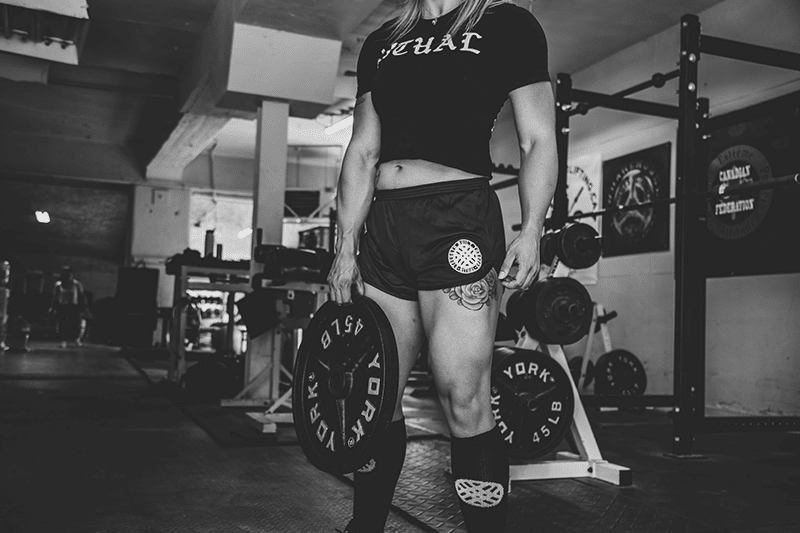
This may not be possible depending on how much weight you want to use and how small your dumbbells are relative to their weights, but would allow for easier access if needed since all one would need to do is drop them before being pinned under too-heavy weights – though this method does require having two hands free near each side’s respective dumbbell during exercise so that they can be dropped quickly enough should something happen suddenly (and also requires extra care when setting up). Finally:
Avoid Using two Separate Weights at all Costs!
These types of setups are generally considered unsafe because they require both arms working together against gravitational forces pulling down on each side independently – which means even if one arm has enough strength left after pressing its side’s weight upward again during an attempt at lifting heavier loads without any assistance whatsoever from someone else nearby
How to Bench Press Alone in A Power Rack
Power racks are multi-functional, free weight stations that will allow you to bench press safely and effectively. The design of power racks makes them suitable for this purpose, as they allow you to perform barbell exercises such as the bench press without a spotter.
To do this, first set the safety pins at the right height. If the safety pins are too high or too low, they won’t be able to properly support your body if you get stuck under the bar while doing a bench press.
Your next step is to ensure that either a spotter bar or a weighted barbell is used. A spotter bar has fixed weights on both ends, making it stable and unlikely to tip over if left unattended during an exercise routine.
A loaded bar with fixed weights on each end can also be used for this purpose; however, avoid using a loose collar—if it comes off and falls from the bar during your routine, it could injure you or damage other equipment in its path.
How to Breathe During the Barbell Bench Press
You want to inhale deeply into the diaphragm before your start to lower the barbell.
Make sure that your core, glutes, and grip and tight at all times.
Exhale at the top of the exercise as you lock out the weight.
Breathing correctly involves using your diaphragm—the muscle at the base of your lungs—to control the expansion of your belly when you inhale, instead of just relying on your chest moving up and down.
As a result, if you focus on breathing directly into your stomach (not into your chest), then not only will each rep become easier, but more importantly you’ll be significantly less likely to injure yourself while performing the bench press
Best Safety Tips for the Barbell Bench Press
The most important thing to know about bench press safety is that this exercise isn’t something you should do alone. No matter what, you need a spotter when doing barbell bench presses. While working out alone might be how you prefer to lift, it’s easy for things to go wrong quickly if you don’t have someone there to assist in case of an emergency.
Some other safe practices include the use of safety equipment and a proper technique when attempting the exercise. Safety equipment includes a power rack and safety pins, which will catch the barbell if there’s too much weight on it and you’re unable to complete your set successfully.
A power rack is an essential piece of equipment for anyone who does weights regularly but especially for those who work out at home or like to workout by themselves.
The power rack will help your form throughout each lift as well as prevent injuries caused by excessive weight and poor form. There are numerous benefits associated with using a power rack while performing lifts such as the bench press in addition to helping you maintain good form while lifting heavy weights without a spotter, including:
What to Do if You Get Stuck During the Barbell Bench Press
- This exercise can be dangerous if you don’t have a spotter. If you get stuck in the bottom position with a heavy weight on your chest, it’s difficult to get out of. So, always use a spotter or train with weights that you know you can handle.
- Don’t panic and think about what you can do to get out of this situation.
- If you can’t get out of the bottom position, try the following tips:
- Shift your upper body backward, like in step 2 above.
- Lower your legs toward your head to increase the distance between your chest and the barbell. You’ll need strong abs for this one!
Why you Should Not Use a Thumbless Grip for the Barbell Bench Press
The thumbless grip on the barbell bench press is far less secure than a full grip. This opens you up to more injury risk, as you can lose control of the bar more easily.
This is the most obvious reason why you should not use a thumbless grip. A thumbless grip is not as strong and it’s also not safe because when you start to fail or get close to failure, the barbell can slip out of your hand and fall on your neck or chest!
So, if you are looking for a way to improve your bench press, try using the full grip instead of just wrapping your fingers around the bar. You’ll be able to lift heavier weights while being safer at the same time!
Additionally, some people have reported that they experience wrist pain when they do this exercise with an open-handed approach rather than wrapping their thumbs over themselves as well (as described above), which can lead them into further injuries down the road (or at least cause some discomfort).
Why Do My Wrists Hurt During the Barbell Bench Press?
Pressing the barbell is a standard exercise used to build size and strength in the chest, arms, and shoulders. However, this movement is also a common cause of pain under the wrist, which can make it difficult to complete your workout.
Exercises that include pressing motions will often cause pain underneath the wrist as the bar rolls over it during each repetition. This can happen with many free weight exercises like overhead presses and bench presses performed with a barbell.
Stabilizing Your Wrists on Bench Presses
You can prevent wrist pain during bench exercises by wrapping or strapping your wrists before you begin your workout. You can purchase wraps online or at most sporting goods stores. You’ll want to wrap them firmly so they don’t slip out of place while you exercise.
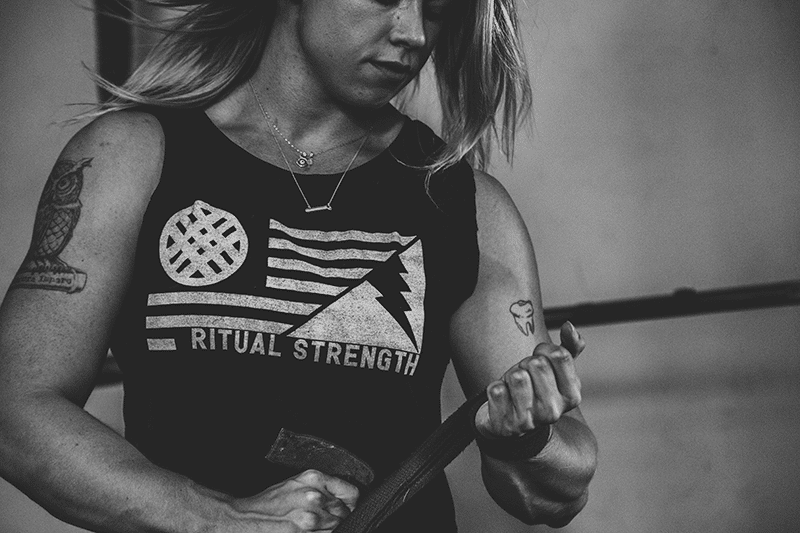
Alternatively, you could hold an elastic band between your hands while you perform bench presses with dumbbells instead of a barbell. This will keep your wrists in alignment during each repetition and prevent them from rolling out to one side under the pressure of the weight
How Do you Make the Barbell Bench Press Harder?
- Use a pause at the bottom of the rep.
- Use a slow eccentric phase.
- Use chains or bands.
- Use the board press.
- Use the floor press.
- Use the close grip bench press.
- Use the single arm bench press.
- Use the landmine press.
How Do you Make the Barbell Bench Press Easier?
To make the barbell bench press easier:
- Use dumbbells instead of a barbell. The reason for this is because the barbell can be difficult to hold in place. Dumbbells are much easier to control.
- Use a Smith machine instead of a free weight barbell. This will help you get into position and keep you steady along the whole range of motion, making it much safer overall.
- You could also try a lighter weight, or use alternate exercises like dumbbell presses or dumbbell bench presses which are slightly different in terms of range of motion and muscles used but will generally be harder to perform incorrectly.
How Can I Increase the Weight of My Barbell Bench Press?
One of the most common ways to increase the weight you can bench press is to improve your technique.
Other methods for increasing your barbell bench press:
- Increase the size of your chest, back and shoulder muscles.
- Strength training to increase the strength of your muscles.
- Use a spotter to help with heavy lifts.
- Use a power rack for safety during heavy lifts.
- Use a bench press board or bench press rack for safety during heavy lifts.
- Use a “bench press shirt” or other supportive equipment that allows you to lift heavier weights than you could without it (although this can damage your joints if used improperly).
Who Should Do the Barbell Bench Press?
The barbell bench press is an effective compound exercise for anyone to master.
Whether you’re new to lifting or a seasoned gym veteran, the bench press is a fundamental exercise that can provide consistent results over time.
You can perform the barbell bench press using different variations of weight based on your current level of strength and skill. For example, you may want to start with lighter weights if you’re just beginning a weight-lifting routine, and as your strength increases, you may want to switch to heavier weights.
Regardless of how much weight you use or how many reps you complete, beginner or advanced lifter, the barbell bench press will offer numerous benefits for your overall health.
Is the Barbell Bench Press Suitable for Beginners?
In most cases, the movement is a safe exercise for beginners. The lifter can control the weight on their own and can choose to have one or several spotters if they wish.
The exercise is also an easy exercise to learn the basics, which makes it particularly suitable for beginners who might feel intimidated by complex movements like deadlifts, squats and overhead presses.
There are some caveats that apply to this statement about beginner-friendliness. It has been noted that people with long arms tend to struggle with the barbell bench press because their arms are not long enough to perform the full range of motion recommended for best results (and safest form).
If you have short arms, you needn’t worry—you’ll be able to get a better grip on the bar and will find it easier to perform each rep of your bench press workout with greater ease.
Can you Build Muscle with the Barbell Bench Press?
You can build muscle with this exercise. The key to doing so is ensuring your strength training routine includes appropriate volume and frequency, that you’re using a weight that challenges your muscles to fatigue, and that you eat enough protein to support muscle growth.
If you’re serious about building muscle with the bench press (or any other lift), consider hiring an online coach who can help you track your progress, make adjustments as needed, and provide guidance on proper form.
Can you Build Strength with the Barbell Bench Press?
There is no doubt that the barbell bench press is one of the best compound exercises for building upper body strength. The movement involves multiple muscles and joints, including:
- shoulders
- chest (pectoralis major)
- triceps
- hips (gluteus maximus)
- core (abdominals and obliques)
The arms are used to push a weighted bar away from your torso. Because the movement is so large, you can use heavy weights—this makes it an excellent exercise for building muscle and strength.

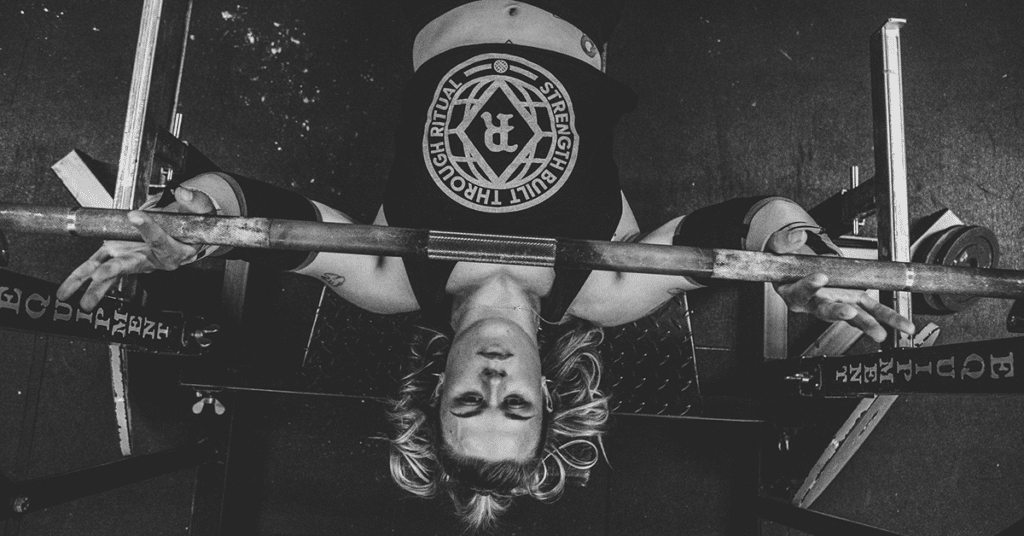
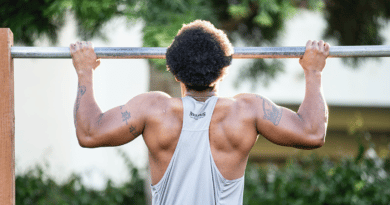


Pingback: Incline Dumbbell Press Best Guide: Benefits, Muscles Worked and Technique Tips - Outdoor Fitness Society